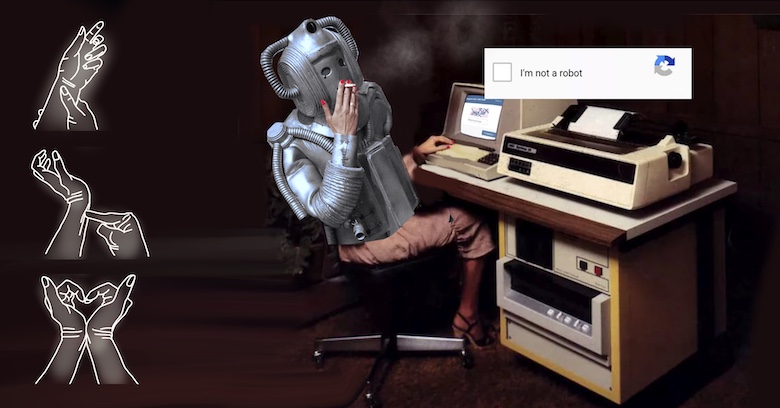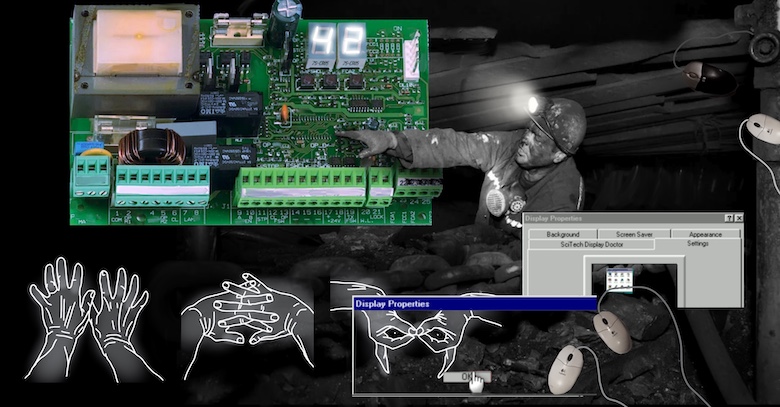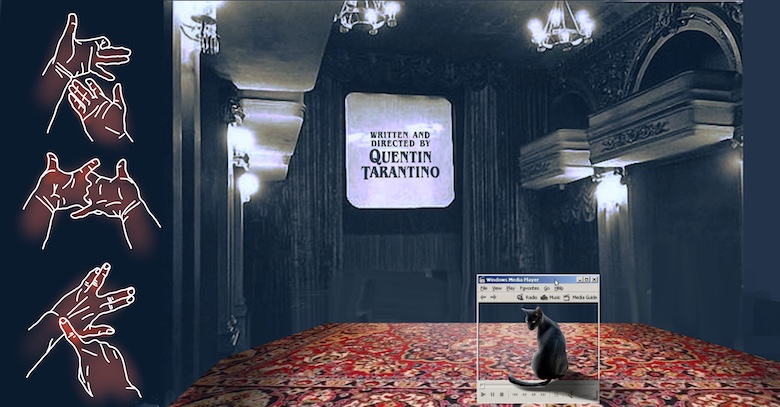
It seems that the ability to order any gadget at any time from anywhere in the world should have discouraged people from creating technical devices with their own hands. But here's the deal: technologists continue to craft a lot on their own. Someone cannot find on the market “the same, but with mother-of-pearl buttons”, others want to improve their technical knowledge, someone wants to save money, but for someone it’s just a hobby with the opportunity to enjoy the process ...
On the other hand, in the century the Internet, surprising someone with a homemade device is also not easy. And only a combo - not just to create a craft, but also to describe it in such a way that one cannot tear yourself away from the post - evokes wide and true admiration. And to help authors get the recognition they deserve, Habr holds an annual competition for IT articles "TechnoText-2020" .
In the meantime, the creators of the bright materials of the hub "DIY, or Do it Yourself" held a kind of master class and told how to combine one with the other to make it really cool.

Chip without Dale: about the experience of sewing two tags into the hand
Author: Bluewolf
Article: “ How I implanted RFID in my hand, and then NFC. Part 2 "
" The idea to sew an implant into the arm appeared a long time ago, when I first learned about the existence of implantable chips for animals - it is convenient to have the key to the door always with me. As a software engineer with additional education in the field of electronics, I could not help but appreciate how technological, simple and convenient it is. After some time, eBay managed to find suitable chips, and then nothing stopped me from trying.
It wasn’t scary: I understood that the worst that could happen was a small local inflammation, due to which I would have to get the chip. Although I understand that from the outside it sounds scary, so I did not tell anyone about my plans in advance and did not consult with anyone so that they would not start worrying or dissuading. It seems to me that the doctor who helped me place the mark was more afraid of me - not because he knew about some possible dire consequences, but simply because he (the general practitioner) is rarely approached with such requests.
7 years have passed since the introduction of the first mark, the desire to get rid of it has never appeared - it does not squeak on metal detectors, there was no inflammation, without special stretching of the skin on the hand, the mark is invisible and is not felt at all. So after a while I decided on one more manipulation and sewed (already on my own) an NFC tag as well.
I was prompted to write an article on Habr by the fact that at that time (2014) there was absolutely no information about this on the Russian-language Internet. I wanted to tell you where to get the chip, what to do with sterilization, and generally explain why it is not scary and not dangerous.
Haita was not afraid - I believe that Habré has the most adequate audience, if we are afraid of hate here, then it’s easier not to write anything in Runet at all.The break between the publication of the first and second parts of the article was caused by other, somewhat large manipulations with the body, since at that time I was going through the process of gender reassignment. A typical story, like most who did it: innate characteristics, denial, lack of opportunity, and finally action. Therefore, as you can see, the first part of the article is written from a male person, the second - from a female one. I could have changed the title and text of the previous article, but there were still a lot of comments, so I decided not to change anything.
At the end of the period when life stabilized somewhat, I decided to close various old "tails", including to finish writing the second part of the article, especially since I performed the second implantation without seeking the help of doctors. By tradition, there were both doubters and terrified in the comments, but I am glad that, in general, the response to both materials is positive and that I was able to convey to the audience that this is possible, normal and convenient for many. "

DIYers are not born, they become DIYers
Author: c_kotik
Article: " Crafts from non-working HDD - mini-pump "
"Since childhood, I admired people who know how to do something with their own hands. But in my youth it was somehow more pleasant to play war games and run after the girls.
After graduating from university and getting a permanent job, when life scattered friends, and the TV shows were all revised, the question arose of what to do. Well, do not drink too much, in fact! So I decided to do modding as an alternative - then it was still strongly associated with the manufacture of cooling and PC cases with my own hands. Now, alas, it is enough to pour LEDs and bend the tubes for LSS - and, voila, you are a cool YouTube star modder.
The ideas of my “homemade products” usually came from the fact that there was no ready-made solution for the desired criteria on sale. Well, or it was, but it was unreasonably expensive and I realized that I could do better myself.
So, for the same pumps, I did not find an analogue with the dimensions I needed, even on the ubiquitous AliExpress.
Alas, neither materially, nor "geographically" (nowhere to place) I can not afford a wide range of materials and tools. This, of course, is reflected in the search for materials and in the way of processing. So I select ideas taking into account what can be done from the "waste of production" using a hacksaw and a screwdriver.
I share my "homemade products" with the habrasoobschestvo primarily for the sake of feedback. There are enough people on Habré who are professionally engaged in what you yourself invent "on the knee" and on a whim.They will always advise something, constructively criticize - to improve is much more effective than to fight with everything yourself. And, to be honest, participation in the program of encouraging authors from Habr is also a good help for future ideas. "

From FM receiver to smart home
Author: madcatdev
Article: “ TinyFL - a flashlight driver on a microcontroller ”
“I've been doing DIY for quite a long time, and this applies not only to electronics, but also to programming. I've always liked doing things with my own hands. The very first thing I did with electronics was soldered a set "Assemble it yourself" from "ChiD", I was then about 10 years old. It was a simple pocket FM-receiver powered by a "Krona" battery. I was pleasantly surprised when he earned money, then took him to his summer cottage and listened to Our Radio in the evenings.
Since then I have been making one thing or another - there are a lot of ideas, I would have found more time to implement them. At the moment, my daily work is not connected with hardware, although I would like to do it professionally.
, - , — , .By the way, I have been using the flashlight regularly since then. So, at home I have a lot of all small do-it-yourself automation, for example, a ventilation and aquarium lighting control system, which I also once made myself on Arduino. In the future, I would like to create a full-fledged “smart home” system, but so far my hands have not reached it.
Until recently, only I used all the fruits of my creativity. But such projects always take a lot of time and effort, so in addition to using the result, I want to document the process itself and happily dive into it again and again. So I decided to share my work with the community. The positive response did not surprise, but made me happy and inspired, so I am planning new projects and publications with redoubled enthusiasm ”.

Commentary on Habré feat for experiments
Author: epsonic
Article: "The story of how I assembled a 120-inch home theater from pipes, ropes, a folding screen and black velvet "
"I became interested in projectors as such about 8 years ago, when I realized that I was missing my 52-inch TV. My "first child" was the Epson EH-TW450, which served me faithfully for many years, but before moving, I sold it, and the budget was not enough for the brand new Epson EH-TW5650.
Once in one of the discussions, I clashed with a Habravchanin who insisted that XGIMI X2 is much better than Epson. So I was drawn to experiments. As a result, the "Chinese" turned out to be quite watchable.The main disadvantage is that his focus "walks". When the projector is cold, focus misses the bottom, when it warms up, it misses the top, and you have to adjust a little each time. Plus, he has a terrible lag, he can't play "responsive" games. If you turn on the laptop BEFORE turning on the projector, then the laptop incorrectly detects the HDMI range and the picture falls through the shadows before the range is corrected through the driver settings. Well, its brightness is ridiculous - around 200 ANSI lm, you can watch it only in semi-darkness or in complete darkness.
As for the home theater design in general, it still works, it is on this 120-inch screen that I watch movies, StarCraft 2 championships (GSL in particular), YouTube videos and play games on PS4. From time to time I try different models of projectors, looking for an ideal replacement for the Chinese, which I plan to operate until it fails, although, I must admit, I'm already pretty tired of it.
By the way, briefly my opinion on how to choose a projector: brightness of at least 1,000 lumens, fHD resolution, necessarily based on 3LCD, since the DLP “rainbow” is clearly visible on contrasting fast scenes, as well as noise from “ "quivering" mirrors that form the image. This, by the way, can be attributed to the disadvantages of the "Chinese", which I wrote about above, since it is RGB-LED DLP.
The home theater isn't the only DIY construction in my house. I have, for example, a 46 '' LED light panel with 10 kHz PWM dimmer, assembled from LED strips, plastic corners, a sandwich panel and optics / diffusers from an old faulty TV. It works, I use it.
I write articles on Habr because I like to share my expertise and make life easier for others by collecting the necessary information in a compressed format and digestible form, and not forcing them to search for something in the sea of SEO-optimized articles in Google. "

I want to create my own museum of laser technology
Author: Laserbuilder
Article: “ Homemade copper chloride vapor laser ”
“I had an interest in technology since early childhood, I always wanted to figure out how this or that technical device works. At first, the satisfaction of curiosity was mostly destructive - I disassembled and studied the devices found in the garbage dumps, then for a while I abandoned this business and became interested in computer games, but by the senior grades of school I got fed up with them and I first began to create something technical.
I got an interest in lasers after watching a film in which the heroes used laser weapons as a child. It became interesting how realistic it is to recreate something similar with the existing level of technology.From the children's encyclopedia I learned that lasers are actively used for various technological operations in industries: cutting, welding and others. The first laser pointer I got back in my school years, and as a student I was able to get acquainted with laboratory gas lasers for the first time and get access to more or less detailed literature on this topic.
It has been possible to actively engage in laser technology since about 2014–2015: until that time, there was mainly the accumulation of resources and knowledge. At some point, I was devilishly outraged by the attempts of my elders to hammer it into my head that it was unrealistic to engage in laser technology without having a position in some serious organization with a lot of resources and half a century of experience. I wanted to prove first to university teachers, and then to a wider audience that creating a working laser in a home workshop / laboratory is quite possible with due persistence and desire.
And also lasers (namely "real", gas, liquid, solid-state high power, not pointers from a DVD cutter) turned out to be a huge unoccupied niche in the DIY-environment. It's nice to feel like a pioneer in something. I usually take ideas for my projects in the scientific literature when I find mentions of a particular type of laser, which ultimately did not enter commercial production.
Lasers are stored partly at home, partly in the garage. What do I do with them after assembly? I mostly show it to others and try to keep it in working order. I never sold DIY lasers, although sometimes I resold interesting factory finds to foreign collectors - that is, what comes across relatively often on the secondary market. In the very distant future, I would like to create my own version of a museum of laser technology. In the meantime, it's just a hobby for me, there is no practical or commercial purpose behind it. Sometimes, however, he took lasers for repairs in the laboratories of the university where he studied.
My profession is not related to lasers, although it helps to solve a number of problems in their manufacture. I work as an operator of a CNC lathe, which allows me to solve in full all the tasks of manufacturing special metal parts for lasers. In general, oddly enough, with the purchase of components 10 years ago, everything was easier than it is now. During my student days, the main source of spare parts was the laboratories of the university and related organizations (there was always something that they were ready to donate, throw away, exchange), the university dump (when active repairs were carried out in the premises), large collection points for scrap metal (later) ... Something was purchased through friends on social networks and forums, including abroad, when it was still economically justified.
With the advent of large online trading platforms, I began to buy a lot on them, invaluable help was also provided by employees of a company that repairs lasers throughout the country, they themselves found a lot of the parts I needed. But in general, to obtain many of the details, purposeful and persistent searches are needed, sometimes lasting months or even years. So I'm glad that I have accumulated the main "capital" for this hobby in advance.
One friend advised me to share my developments on Habré, justifying this by the fact that there is a fairly wide and technically savvy audience that in the future can help get the missing parts and components. He turned out to be right: I received a lot of interesting proposals from people who wanted to get rid of various laser trash, it's a pity that my geographical location does not allow us to take full advantage of them. "
Surely, since you are interested in this post, you also did something cool with your own hands, or even managed to write about it this year. Or are you in the process of realizing your craft idea? Or did our top heroes inspire you to create your own craft and describe this experience? In this case, apply for the TechnoText-2020 IT articles competition in the DIY / Do it yourself genre - perhaps your techno masterpiece will delight Habr and win!
